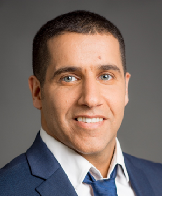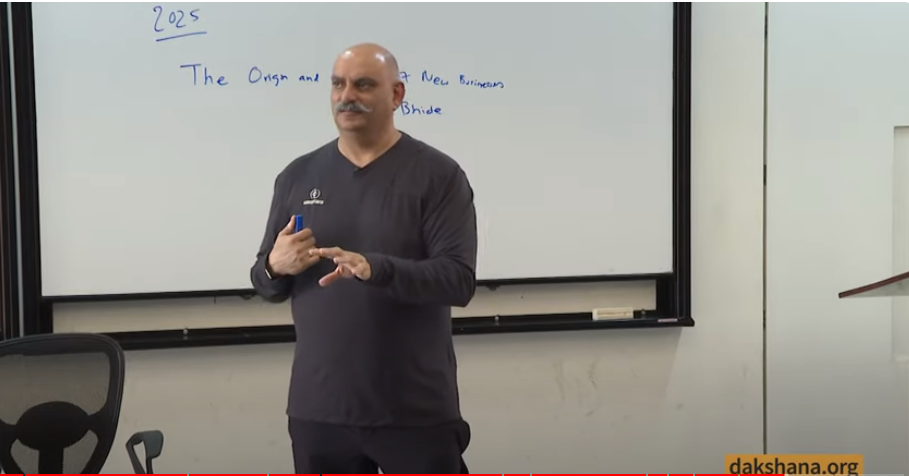by Shai Angel
You probably know or have heard about Warren Buffet, the best investor in history. Whereas there are a lot of great investors who emulate Warren Buffet’s philosophy and strategy, one of them has succeeded even in surpassing Warren Buffet’s record for several years, and he didn’t learn at business school or the university; he earned his bachelor’s degree in engineering. He is “The Indian Warren Buffet,” Mr. Mohnish Pabrai.
Mohnish Pabrai was born in Mumbai, India, on June 12, 1964. He earned a bachelor’s degree in engineering from the Indian Institute of Technology (IIT) Mumbai. Mohnish started to work at Tellabs between the years 1986–1991. In 1991, he started his own IT consulting and systems integration company, “TransTech, Inc.” with about US$30,000 from his account and US$70,000 from credit card debt. He sold the company in 2000 to Kurt Salmon Associates for $20 million.
Will you offer us a hand? Every gift, regardless of size, fuels our future.
Your critical contribution enables us to maintain our independence from shareholders or wealthy owners, allowing us to keep up reporting without bias. It means we can continue to make Jewish Business News available to everyone.
You can support us for as little as $1 via PayPal at office@jewishbusinessnews.com.
Thank you.
In his mid-30s, Mohnish Pabrai was introduced to value investing concepts and tactics rather late in his career. Pabrai realized right away that Buffett was an expert at the compounding game. He had multiplied his wealth eighteen times in forty-four years, and he was well on his way to being the richest man on the planet.
This made Pabrai ponder. What if he could learn how Buffett chose stocks and adopt his successful strategy? The “thirty-year game” that Pabrai refers to as starting then was to turn his $1 million into $1 billion. “My motivation is not to become wealthy,” he states. “To win the game is the driver’s goal. Warren’s motivation is exactly the same: to demonstrate via the outcomes that I performed at my highest level and that I am the best since I followed the rules, won fairly, and played the game.
Pabrai’s strategy for overcoming the obstacle of becoming a billionaire is a valuable example for all of us as investors and in all facets of life. He didn’t try to create something new, like a new algorithm, to take advantage of minute market price discrepancies. Rather, he determined who was the best player in this game, examined the reasons for his success, and then meticulously replicated his strategy. Cloning is how Pabrai refers to this procedure. We could also refer to it as imitation, modeling, or replication. But it makes no difference in nomenclature. This tactic is for those who prioritize winning over seeming dignified or sophisticated.
By copying Buffett and then his companion, the multi-talented Charlie Munger, Mohnish has emerged as one of the most successful investors of our day. His flagship hedge fund outperformed the S&P 500 index, returning 1,204 percent between 2000 and 2018. By March 31, 2018, if you had invested $100,000 with him when he first began managing money in July 1999, it would have increased to $1,826,500.
Pabrai believed Buffett’s approach to investing was the only sensible one since it appeared to be both “so powerful” and “so simple.” However, he was confused that nearly none of the other money managers he looked at followed Buffett’s rules. “A whole group of physicists who don’t believe in gravity… Whether you believe in gravity or not, it will pull you down!” was how it felt. Compared to value investors, most money managers fall short primarily because they lack the most important quality of an investor: patience.
His license plate says COMLB 26 to be a constant reminder of this compounding aim. He was expecting to do well even if he missed by a country mile; assuming, for example, an annual percentage rate of 16 percent, his $1 million would grow to $85.85 million in thirty years. This is compounding’s glory
Over the course of his investing career, Mohnish Pabrai altered his technique, which produced a fantastic return on investment and capital gain. He initially didn’t hide that he was a shameless clown, copying the moves of successful investors like Warren Buffet. In “The Dhandho Investor: The Low-Risk Value Method to High Returns,” Pabrai, the author, provides insights into his approach to investing. Warren Buffet emailed Mohnish a note of appreciation for his investment fund’s outstanding performance, letting him know how grateful he was as an investor and a role model.
 Shai Angel, CPA, the author, earned a master’s degree in law, a bachelor’s degree in accounting and economics, and a certificate in director training. He has previously held senior financial positions in well-known businesses. In his years of working in the financial industry, he has actively learned about “Value Investing” from some of the most prominent investors in the world, including Warren Buffett, Peter Lynch, Mohnish Fabray, and others, and also applied their investment strategies. (Shai Angel Linkedin)
Shai Angel, CPA, the author, earned a master’s degree in law, a bachelor’s degree in accounting and economics, and a certificate in director training. He has previously held senior financial positions in well-known businesses. In his years of working in the financial industry, he has actively learned about “Value Investing” from some of the most prominent investors in the world, including Warren Buffett, Peter Lynch, Mohnish Fabray, and others, and also applied their investment strategies. (Shai Angel Linkedin)





